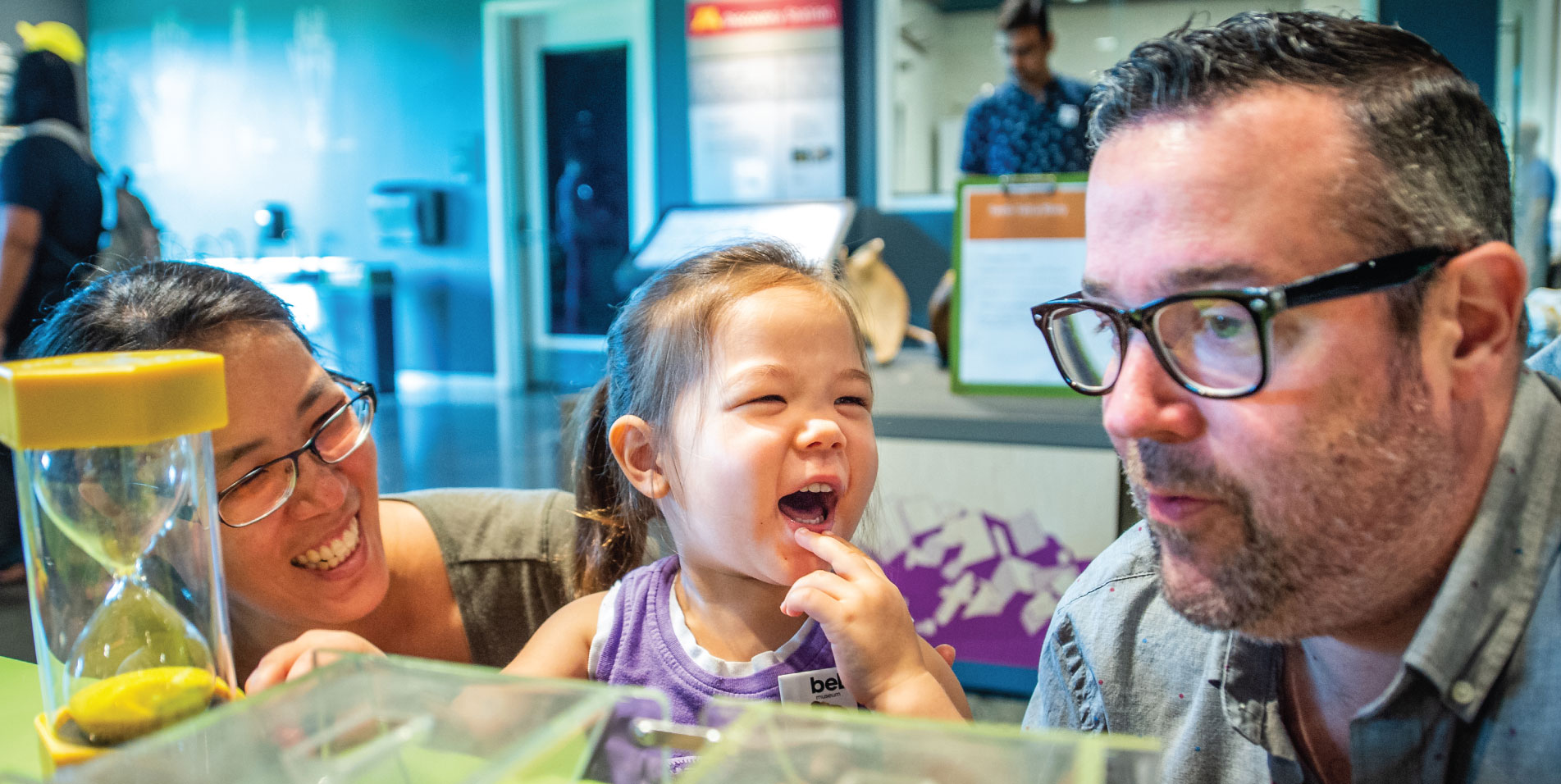
Touch & See Lab
Celebrating 50 years
Many people learn best through a mix of observation, compare-and-contrast, and sensory engagement. That’s the idea behind the Touch & See Lab. In this unique space, visitors get hands-on access to natural history specimens—from 10,000 year-old fossils and living plants and animals to our honey bee hives just outside the windows.
Those visitors include some 25,000 PreK-12 students who tour the Bell each year, many of whom will remember this room as a highlight of their visit. Museum educators—and University of Minnesota undergraduate and graduate students—facilitate the tours, sharing their love of science with the general public.
At the new Bell Museum, visitors will receive identification guides, magnifying glasses, and other scientific tools to enhance their learning. We’ll also take the Lab on the road, bringing our programming to schools, libraries, community centers, and other educational venues across Minnesota.
Roger E. Anderson Education Wing
Connected to the Lab, our new education wing features four classrooms: the Hive, Nest, Den, and Web. Each room accommodates 30-40 students, from youth to adults.
Two of these will be “wet classrooms” that support physical science and field biology programs. The other two rooms are “dry classrooms,” intended as informal learning and discussion spaces for a variety of programs
50th Anniversary
Before 1968, natural history museums didn’t allow visitors to touch their collections—they were secured behind glass or in private storage. The notion was unheard of until Richard Barthelemy, a public education coordinator at the Bell Museum, realized that it was actually a great idea.
Most visitors, regardless of their age, wanted to touch the exhibits behind the glass. In response, “Bart” started sitting down with groups and passing around bones, furs, feathers, and other interesting objects. After a new wing was added to the Bell Museum’s former Church Street location, gallery space became available for Bart and project partner Roger Johnson from the University of Minnesota’s College of Education to create a wholly new museum experience.
Thanks to this simple yet radical idea, a transformation of natural history museums began worldwide—and we were the first to usher in this new educational approach. Our exhibits have changed since then, but the basic idea remains the same: it’s easier to learn about the natural world when we can touch and see it.




